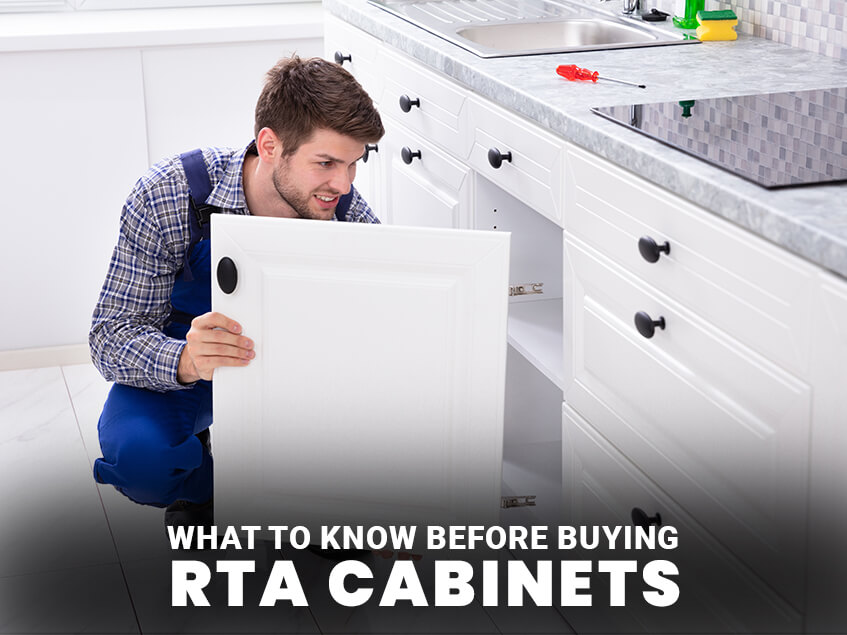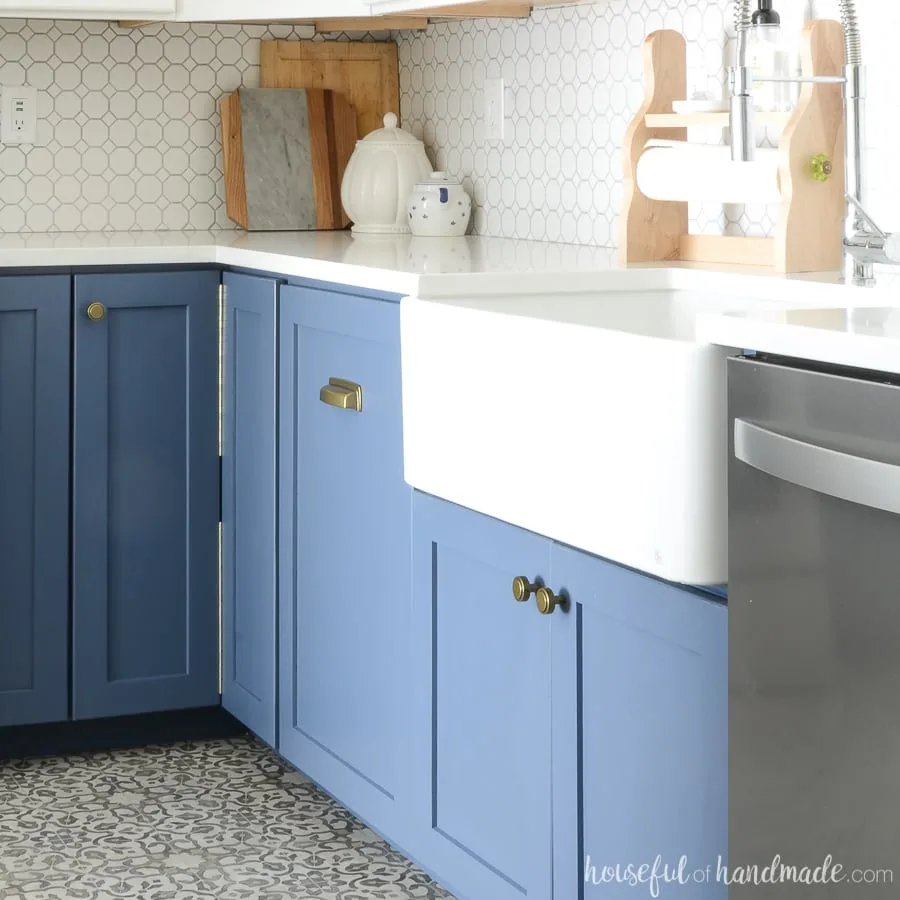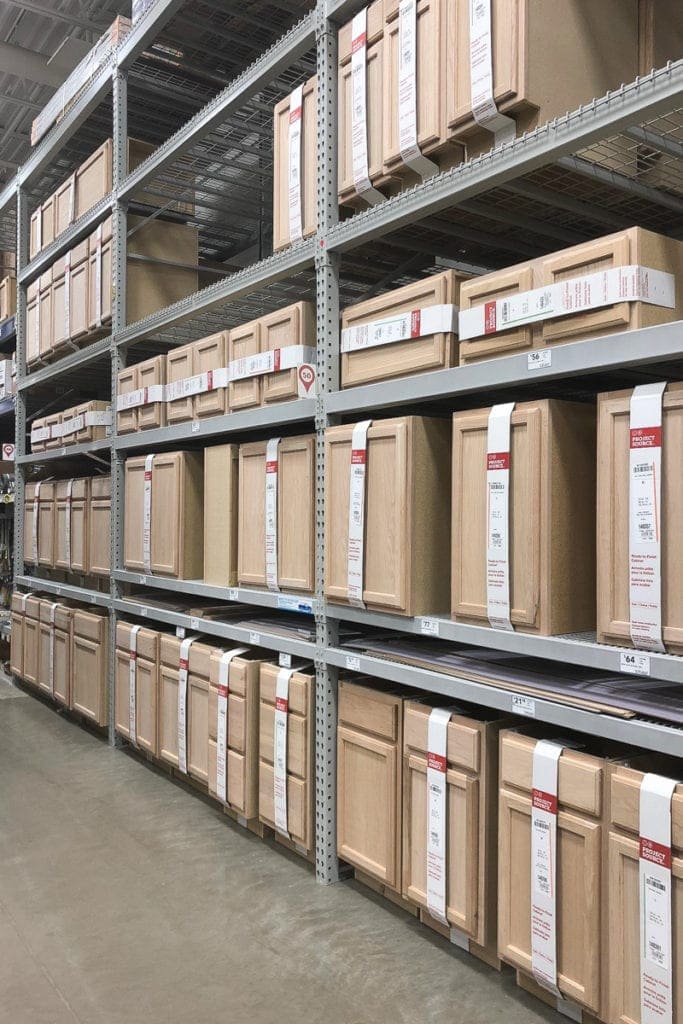Before buying kitchen cabinets, consider the material, design, and budget. Assess your kitchen space and storage needs.
Choosing the right kitchen cabinets can transform your kitchen’s functionality and aesthetic appeal. Start by evaluating your storage requirements and the layout of your kitchen. Material selection is crucial; opt for durable and easy-to-maintain options like solid wood or plywood.
Budget plays a significant role, so set a realistic spending limit. Design and finish should complement your kitchen’s style, whether modern or traditional. Measure your space accurately to ensure a perfect fit. Consulting with a professional can offer valuable insights and prevent costly mistakes. Remember, quality cabinets are an investment that can enhance your home’s value and your daily cooking experience.
Table of Contents
ToggleAssessing Your Needs
When considering new kitchen cabinets, assessing your needs is crucial. This step ensures you choose cabinets that perfectly fit your lifestyle and storage requirements. By understanding your daily habits and storage demands, you can make informed decisions that enhance your kitchen’s functionality and aesthetic appeal.
Lifestyle Considerations
Examine how you use your kitchen daily. Do you cook frequently or entertain guests often? If you enjoy cooking, you might need more counter space and easy-to-reach cabinets. For entertainers, consider cabinets with glass doors to showcase your dishware.
Families with children may require sturdy, easy-to-clean surfaces. Think about safety features like soft-close doors and drawers. Assess your kitchen layout and traffic flow to ensure your cabinets don’t obstruct movement.
Storage Requirements
Identify what you need to store in your kitchen. Create a list of essential items like pots, pans, small appliances, and pantry goods. This will help you determine the size and type of cabinets necessary.
Consider using a table to categorize your storage needs:
| Item | Storage Solution |
|---|---|
| Pots and Pans | Deep drawers or pull-out shelves |
| Small Appliances | Appliance garage or tall cabinets |
| Pantry Goods | Pull-out pantry or tall cabinets with adjustable shelves |
Utilize pull-out drawers for easy access to items at the back. Opt for cabinets with adjustable shelves to accommodate different sizes of kitchenware. This way, you maximize the utility of your kitchen space.
By carefully assessing your needs, you ensure that your new kitchen cabinets will serve you well for years to come.

Credit: www.bogercabinetry.com
Setting A Budget
Before buying kitchen cabinets, it’s essential to set a clear budget. A budget helps you make informed decisions. It also keeps you from overspending. Let’s dive into some crucial aspects of budgeting for kitchen cabinets.
Cost Factors
The cost of kitchen cabinets can vary widely. Here are some key factors that influence the price:
- Material: Solid wood is more expensive than MDF or plywood.
- Finish: Custom finishes and paints can add to the cost.
- Hardware: High-quality hinges and handles cost more.
- Size: Larger kitchens require more cabinets, increasing the cost.
- Customization: Custom cabinets are pricier than stock options.
Financing Options
There are multiple ways to finance your kitchen cabinets. Here are some popular options:
- Personal Savings: The most straightforward method.
- Home Equity Loan: Use your home equity as collateral.
- Credit Cards: Suitable for smaller projects but watch for high interest rates.
- Store Financing: Many stores offer financing plans with low interest rates.
| Financing Option | Pros | Cons |
|---|---|---|
| Personal Savings | No interest, no debt | May limit budget |
| Home Equity Loan | Lower interest rates | Uses home as collateral |
| Credit Cards | Easy and quick | High interest rates |
| Store Financing | Low interest rates | Limited to one store |
Choosing The Right Material
Choosing the right material for kitchen cabinets is crucial. It impacts durability, appearance, and cost. The material you select should match your kitchen’s style and your budget. Below, we explore different material options, including various wood types and alternative materials.
Wood Types
Wood cabinets offer a timeless and classic look. Different wood types provide various textures and colors.
| Wood Type | Characteristics |
|---|---|
| Oak | Durable, grainy texture, reddish hue |
| Maple | Light color, smooth texture, versatile |
| Cherry | Rich color, smooth grain, ages well |
Consider oak for a traditional look. Maple suits modern kitchens. Cherry adds luxury but costs more.
Alternative Materials
Alternative materials can offer cost savings and unique looks. They are often more resistant to moisture and damage.
- MDF (Medium-Density Fiberboard): Smooth surface, easy to paint, budget-friendly
- Plywood: Strong, less likely to warp, versatile in design
- Laminate: Durable, easy to clean, available in many colors
Each material has its benefits. MDF is economical and easy to paint. Plywood offers strength and stability. Laminate is durable and easy to maintain.
Cabinet Styles
Choosing the right cabinet styles for your kitchen can transform the space. The style of cabinets sets the tone and impacts the overall design. Different styles fit various preferences and home decor. Below, we will explore modern designs and traditional looks to help you decide.
Modern Designs
Modern kitchen cabinets feature clean lines and minimalistic aesthetics. They often use materials like glass, metal, and high-gloss finishes. These cabinets typically have flat-panel doors and sleek hardware.
Key characteristics of modern designs:
- Simple and clean lines
- High-gloss or matte finishes
- Neutral colors such as white, black, or grey
- Minimalistic hardware
Modern cabinets can make your kitchen look spacious and uncluttered. They work well in contemporary homes and urban apartments.
Traditional Looks
Traditional kitchen cabinets exude warmth and charm. They often feature intricate designs, raised panels, and elegant hardware. These cabinets use rich wood tones and ornate details.
Key characteristics of traditional looks:
- Intricate door designs
- Warm wood tones like cherry, oak, or maple
- Decorative hardware
- Crown molding and other decorative elements
Traditional cabinets bring a timeless appeal to your kitchen. They are perfect for classic homes and those who appreciate vintage styles.
| Style | Key Features | Best For |
|---|---|---|
| Modern | Clean lines, high-gloss finishes, minimalistic hardware | Contemporary homes, urban apartments |
| Traditional | Intricate designs, warm wood tones, decorative hardware | Classic homes, vintage styles |
Understanding these styles can guide you in making an informed decision. Your kitchen’s overall feel and functionality depend on your choice.
Quality Indicators
Buying kitchen cabinets is a significant investment. Ensuring you choose quality cabinets can save you money and hassle in the long run. Here, we discuss the key quality indicators to consider before making a purchase.
Construction Techniques
The construction techniques used in kitchen cabinets greatly affect their quality and longevity. High-quality cabinets often use:
- Dovetail Joints: These interlocking joints provide superior strength.
- Mortise and Tenon: This classic technique ensures a tight, durable fit.
- Full-Back Panels: Cabinets with full-back panels offer better stability.
Avoid cabinets with stapled or glued particleboard. These materials are less durable and can break easily.
Durability Factors
Several factors contribute to the durability of kitchen cabinets. Pay attention to these elements:
| Factor | Explanation |
|---|---|
| Material | Solid wood and plywood are more durable than MDF or particleboard. |
| Finish | A high-quality finish protects against moisture and wear. |
| Hardware | Choose soft-close hinges and drawer glides for longevity. |
Cabinets with solid wood frames and plywood sides typically last longer. Ensure the cabinet finish is smooth and even to withstand daily use.
High-quality hardware like soft-close hinges and drawer glides prevent wear and tear. They also add a touch of luxury to your kitchen.

Credit: housefulofhandmade.com
Space Planning
Before buying kitchen cabinets, understanding space planning is crucial. Proper planning ensures your kitchen is both functional and visually appealing. Let’s delve into key aspects of space planning for your kitchen cabinets.
Layout Efficiency
Efficiency in layout maximizes your kitchen space. Consider these factors:
- Work Triangle: Ensure your sink, stove, and fridge form a triangle. This setup minimizes movement and increases efficiency.
- Storage Zones: Group similar items together. For example, keep pots and pans near the stove.
- Traffic Flow: Ensure there’s enough space for movement. Leave at least 3 feet of space for walkways.
Optimizing layout ensures you utilize every inch of space.
Ergonomic Considerations
Ergonomics in kitchen design makes daily tasks easier. Pay attention to:
- Counter Height: Standard height is 36 inches. Adjust based on your comfort.
- Cabinet Reach: Avoid placing frequently used items in high cabinets. Store them at a comfortable height.
- Drawer Placement: Place heavy items in lower drawers. This reduces strain on your back.
Ergonomic design enhances comfort and efficiency in your kitchen.
Custom Vs. Stock Cabinets
Choosing between custom cabinets and stock cabinets is crucial when planning your kitchen. Each option has its benefits and drawbacks. Understanding these can help you make an informed decision for your home.
Pros And Cons
- Custom Cabinets
- Pros: Tailored to your needs, unique designs, high-quality materials.
- Cons: Higher cost, longer lead time, requires professional installation.
- Stock Cabinets
- Pros: Affordable, quick availability, easy to install.
- Cons: Limited styles, standard sizes, lower customization.
Cost Comparisons
| Cabinet Type | Average Cost |
|---|---|
| Custom Cabinets | $500 – $1,200 per linear foot |
| Stock Cabinets | $100 – $300 per linear foot |
Custom cabinets cost more due to bespoke designs and materials. They offer a personalized touch. Stock cabinets are budget-friendly and available immediately. They suit quick renovations well.

Credit: thediyplaybook.com
Installation Tips
Installing new kitchen cabinets can transform your cooking space. Proper installation ensures durability and functionality. Here are some useful installation tips to help you achieve a perfect result.
Hiring Professionals
Hiring professionals can save you time and effort. Experts bring experience and precision to the job. Here are some benefits of hiring professionals:
- Quality Workmanship: Professionals ensure accurate measurements and cuts.
- Time-Saving: They complete the job faster due to their experience.
- Warranty: Many professionals offer warranties on their work.
- Stress-Free: You avoid the hassle of learning and doing it yourself.
When choosing a professional, check their credentials and reviews. Ask for a detailed quote and timeline. Ensure they have experience in kitchen cabinet installations.
Diy Considerations
DIY installation can be rewarding and cost-effective. Before starting, consider the following:
| Aspect | Consideration |
|---|---|
| Skill Level | Ensure you have basic carpentry skills. |
| Tools | Gather necessary tools like drills, levels, and saws. |
| Time Commitment | Be ready to invest several days in the project. |
| Instructions | Follow the manufacturer’s instructions closely. |
Start by measuring your space accurately. Double-check all measurements before cutting. Follow these steps for a smoother installation:
- Remove old cabinets carefully to avoid damaging walls.
- Locate and mark wall studs for secure mounting.
- Install upper cabinets first to avoid working over base cabinets.
- Use a level to ensure cabinets are straight and aligned.
- Secure cabinets with screws into the wall studs.
Consider seeking help from a friend to handle large pieces. Be patient and take your time for a professional-looking finish.
Maintenance And Care
Kitchen cabinets are a big investment. Keeping them looking new is important. Proper maintenance and care are key. This ensures they last for many years. Let’s explore some tips and tricks.
Cleaning Tips
Regular cleaning keeps your cabinets shiny and fresh. Use a soft cloth and warm water. Avoid harsh chemicals. They can damage the finish. For tough spots, a mix of water and mild dish soap works well. Rinse with clean water afterward. Dry with a soft cloth to avoid streaks.
- Dust weekly with a microfiber cloth.
- Wipe spills immediately to prevent stains.
- Use gentle, non-abrasive cleaners.
Long-term Upkeep
Long-term care keeps cabinets in top condition. Inspect hinges and handles regularly. Tighten loose screws. Replace damaged parts promptly. This prevents further damage. Consider applying a wood polish. It adds shine and protection.
| Task | Frequency |
|---|---|
| Dusting | Weekly |
| Cleaning with mild soap | Monthly |
| Inspecting hinges and handles | Quarterly |
| Applying wood polish | Twice a year |
Proper care ensures your kitchen cabinets stay beautiful. Follow these tips for long-lasting cabinets.
Frequently Asked Questions
What Materials Are Best For Kitchen Cabinets?
Solid wood, plywood, and MDF are popular choices. Each offers different benefits in durability and cost.
How To Measure For Kitchen Cabinets?
Measure the height, width, and depth of your space. Ensure accurate measurements to avoid fitting issues.
What Is The Cost Of Kitchen Cabinets?
Prices vary widely. Basic cabinets start around $100 per linear foot, while custom options can exceed $1,200 per foot.
How To Choose The Right Cabinet Style?
Consider your kitchen’s design. Traditional, modern, and transitional styles each bring unique aesthetics.
Are Custom Cabinets Worth The Investment?
Custom cabinets offer personalized design and functionality. They can increase home value but are more expensive.
How Long Do Kitchen Cabinets Last?
High-quality cabinets can last 20-30 years with proper care. Material and usage impact longevity.
What Are Soft-close Cabinets?
Soft-close cabinets feature mechanisms that prevent slamming. They reduce noise and extend cabinet lifespan.
Can I Install Kitchen Cabinets Myself?
DIY installation is possible with the right tools and skills. Professional installation ensures precision and saves time.
What Finishes Are Available For Cabinets?
Options include painted, stained, and laminated finishes. Each offers different looks and maintenance needs.
How To Maintain Kitchen Cabinets?
Clean with mild soap and water. Avoid harsh chemicals. Regularly check and tighten hardware for longevity.
Conclusion
Choosing the right kitchen cabinets requires careful consideration. Focus on quality, style, and budget to make informed decisions. Remember to measure accurately and consult professionals if needed. With these tips, you’ll find cabinets that enhance your kitchen’s functionality and aesthetics.
Enjoy creating your dream kitchen!

